Comparison Study of Induction Motor Models Considering Iron Loss for Electric Drives
Abstract
:1. Introduction
2. State Equations and Transfer Relations of the Models
3. Experimental Setup
4. Results and Discussion
4.1. Impedance Characteristics and Excitation Characteristics
4.2. ILS Characteristics
4.3. Dynamic Characteristics
5. Conclusions
- Under ideal no-load and heavy-load, the impedance and excitation characteristics of the series model were closer to the parallel model. Compared with the parallel model, the deviation of the excitation characteristics of the traditional model was small, that is, the observation error of the traditional flux observer was not large, and the torque control accuracy was greatly affected by the current control deviation.
- Compared with the parallel model, there was an error in estimating ILS using the series model, but the error was, approximately 20% constant, insensitive to load and frequency. As the error is easy to compensate, series model can be used directly as a loss model.
- The discretization of the parallel model required a smaller sampling time or a more accurate numerical algorithm. In the speed open-loop and constant V/F speed regulation process, the dynamic response smoothness of the series model was not as good as that of the traditional model due to the influence of the equivalent ILS parameter. However, the speed compensation of the state Equation and the ILS effect compensation of the torque Equation were significant. Therefore, the series model can effectively replace the complex parallel model to improve the control accuracy of the traditional model under the condition that the ILS resistance is described accurately.
Author Contributions
Funding
Conflicts of Interest
References
- Zhong, Y.; Huang, S.; Luo, D. Stabilization and speed control of a permanent magnet synchronous motor with dual-rotating rotors. Energies 2018, 11, 2786. [Google Scholar] [CrossRef]
- Liu, B.; Badcock, R.; Shu, H.; Fang, J. A superconducting induction motor with a high temperature superconducting armature: Electromagnetic theory, design and analysis. Energies 2018, 11, 792. [Google Scholar] [CrossRef]
- Pablo, M.; Bossio, G.R.; Solsona, J.A.; García, G.O. On-line iron loss resistance identification by a state observer for rotor-flux-oriented control of induction motor. Energy Convers. Manag. 2008, 49, 2742–2747. [Google Scholar]
- Chatterjee, D. Impact of core losses on parameter identification of three-phase induction machines. IET Power Electronics 2014, 7, 3126–3136. [Google Scholar] [CrossRef]
- Chen, W.L.; Cheng, K.M.; Chen, K.F. Derivation and verification of a vector controller for induction machines with consideration of stator and rotor core losses. IET Electric Power Appl. 2018, 12, 1–11. [Google Scholar] [CrossRef]
- Yamamoto, S.; Hirahara, H.; Tanaka, A.; Ara, T.; Matsuse, K. Universal Sensorless Vector Control of Induction and Permanent-Magnet Synchronous Motors Considering Equivalent Iron Loss Resistance. IEEE Trans. Ind. Appl. 2015, 51, 1259–1267. [Google Scholar] [CrossRef]
- Wang, Z.; Lv, H.; Zhou, X.; Chen, Z.; Yang, Y. Design and modeling of a test bench for dual-motor electric drive tracked vehicles based on a dynamic load emulation method. Sensors 2018, 18, 1993. [Google Scholar] [CrossRef]
- Torrent, M.; Perat, J.I.; Jimenez, J.A. Permanent magnet synchronous motor with different rotor structures for traction motor in high speed trains. Energies 2018, 11, 1549. [Google Scholar] [CrossRef]
- Farasat, M.; Trzynadlowski, A.M.; Fadali, M.S. Efficiency improved sensorless control scheme for electric vehicle induction motors. IET Electric Syst. Trans. 2014, 4, 122–131. [Google Scholar] [CrossRef]
- Qu, Z.; Ranta, M.; Hinkkanen, M.; Luomi, J. Loss-Minimizing Flux Level Control of Induction Motor Drives. IEEE Trans. Ind. Appl. 2012, 48, 952–961. [Google Scholar] [CrossRef]
- Uddin, M.N.; Nam, S.W. New Online Loss-Minimization-Based Control of an Induction Motor Drive. IEEE Trans. Power Electron. 2008, 23, 926–933. [Google Scholar] [CrossRef]
- Garcia, G.O.; Luis, J.C.M.; Stephan, R.M.; Watanabe, E.H. An efficient controller for an adjustable speed induction motor drive. IEEE Trans. Ind. Electron. 1994, 41, 533–539. [Google Scholar] [CrossRef]
- Lim, S.; Nam, K. Loss-minimising control scheme for induction motors. IEE Proceed. Electric Power Appl. 2004, 151, 385–397. [Google Scholar] [CrossRef]
- Aissa, K.; Eddine, K.D. Vector control using series iron loss model of induction motors and power loss minimization. World Acad. Sci. Eng. Technol. 2009, 52, 142–148. [Google Scholar]
- Liu, Y.; Bazzi, A.M. A General Analytical Three-Phase Induction Machine Core Loss Model in the Arbitrary Reference Frame. IEEE Trans. Ind. Appl. 2017, 53, 4210–4220. [Google Scholar] [CrossRef]
- Sung-Don, W.; Myoung-Ho, S.; Dong-Seok, H. Stator-flux-oriented control of induction motor considering iron loss. IEEE Trans. Ind. Electron. 2001, 48, 602–608. [Google Scholar] [CrossRef]
- Piazza, M.C.D.; Luna, M.; Pucci, M. Electrical Loss Minimization Technique for Wind Generators Based on a Comprehensive Dynamic Modeling of Induction Machines. IEEE Trans. Ind. Appl. 2017, 53, 3696–3706. [Google Scholar] [CrossRef]
- Slemon, G.R. Modelling of induction machines for electric drives. IEEE Trans. Ind. Appl. 1989, 25, 1126–1131. [Google Scholar] [CrossRef]
- Mizuno, T.; Takayama, J.; Ichioka, T.; Terashima, M. Decoupling control method of induction motor taking stator core loss into consideration. IEEJ Trans. Ind. Appl. 1989, 109, 841–848. [Google Scholar] [CrossRef]
- Jung, J.; Nam, K. A vector control scheme for EV induction motors with a series iron loss model. IEEE Trans. Ind. Electron. 1998, 45, 617–624. [Google Scholar] [CrossRef]
- Kubota, K.; Matsuse, K. Compensation for core loss of adaptive flux observer-based field-oriented induction motor drives. In Proceedings of the 1992 International Conference on Industrial Electronics, Control, Instrumentation, and Automation, San Diego, CA, USA, 9–13 November 1992; Volume 61, pp. 67–71. [Google Scholar]
- Hasegawa, M.; Yamasaki, H.; Doki, S.; Okuma, S. Compensation of stator iron loss of vector-controlled induction motor using robust flux observer. Electrical Eng. Japan 2001, 137, 59–66. [Google Scholar] [CrossRef]
- Reed, D.M.; Hofmann, H.F.; Sun, J. Offline Identification of Induction Machine Parameters WITH Core Loss Estimation Using the Stator Current Locus. IEEE Transactions Energy Conversion 2016, 31, 1549–1558. [Google Scholar] [CrossRef]
- Lin, C.-K.; Yu, J.-T.; Huang, H.-Q.; Wang, J.-T.; Yu, H.-C.; Lai, Y.-S. A dual-voltage-vector model-free predictive current controller for synchronous reluctance motor drive systems. Energies 2018, 11, 1743. [Google Scholar] [CrossRef]
- Hildebrand, E.N.; Roehrdanz, H. Losses in three-phase induction machines fed by PWM converter. IEEE Trans. Energy Convers. 2001, 16, 228–233. [Google Scholar] [CrossRef]
- Wang, W.; Wang, W. Compensation for inverter nonlinearity in permanent magnet synchronous motor drive and effect on torsional vibration of electric vehicle driveline. Energies 2018, 11, 2542. [Google Scholar] [CrossRef]
- Lee, S.J.; Kim, J.M.; An, D.K.; Hong, J.P. Equivalent Circuit Considering the Harmonics of Core Loss in the Squirrel-Cage Induction Motor for Electrical Power Steering Application. IEEE Trans. Magnetics 2014, 50, 1–4. [Google Scholar] [CrossRef]
- Zhao, J.; Hua, M.; Liu, T. Research on a sliding mode vector control system based on collaborative optimization of an axial flux permanent magnet synchronous motor for an electric vehicle. Energies 2018, 11, 3116. [Google Scholar] [CrossRef]
- Xu, Y.; Shi, T.; Yan, Y.; Gu, X. Dual-Vector predictive torque control of permanent magnet synchronous motors based on a candidate vector table. Energies 2019, 12, 163. [Google Scholar] [CrossRef]
- Sun, W.; Yu, Y.; Wang, G.; Li, B.; Xu, D. Design Method of Adaptive Full Order Observer with or without Estimated Flux Error in Speed Estimation Algorithm. IEEE Trans. Power Electron. 2016, 31, 2609–2626. [Google Scholar] [CrossRef]
- Maraaba, L.; Al-Hamouz, Z.; Abido, M. An efficient stator inter-Turn fault diagnosis tool for induction motors. Energies 2018, 11, 653. [Google Scholar] [CrossRef]
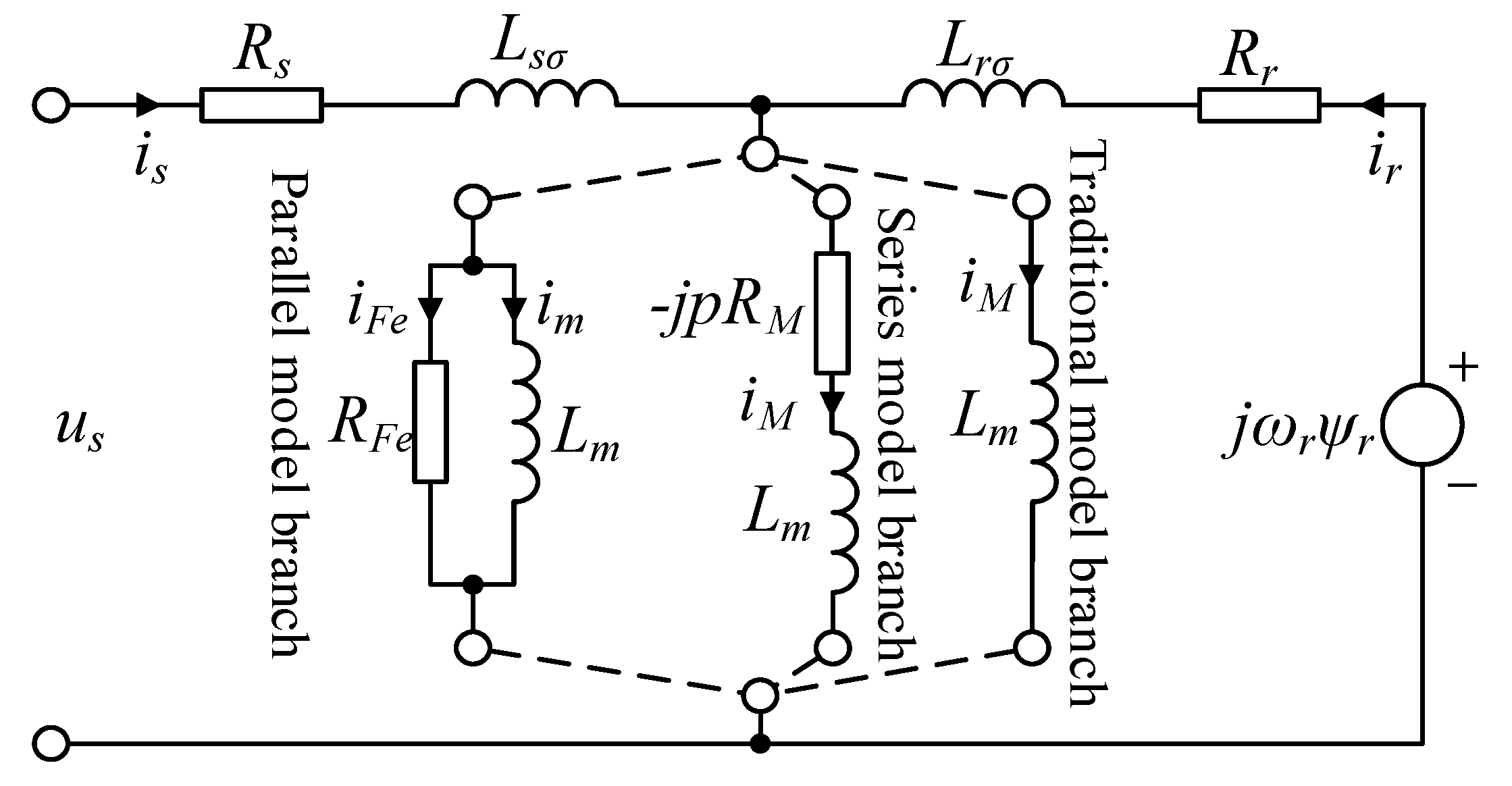
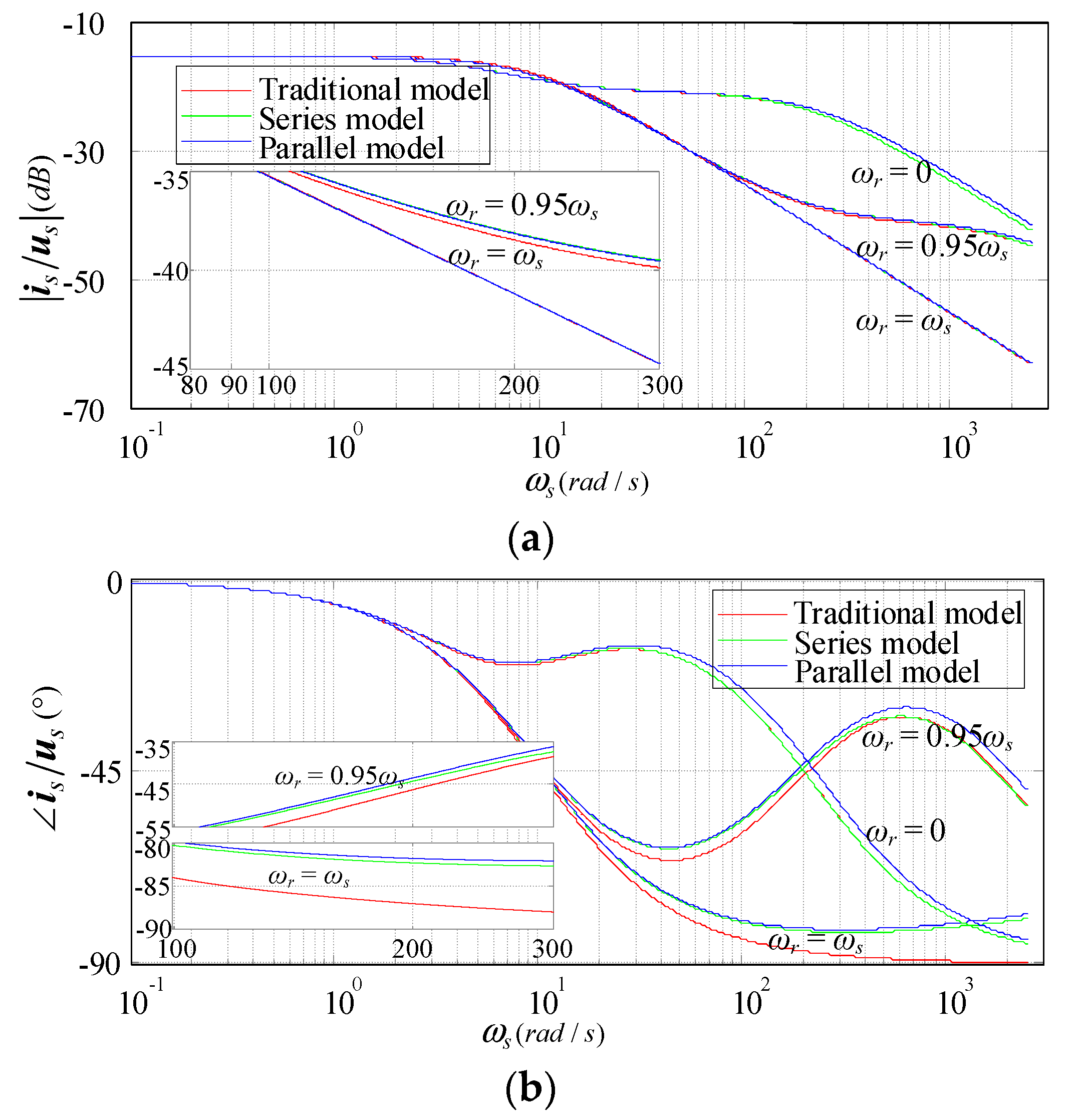
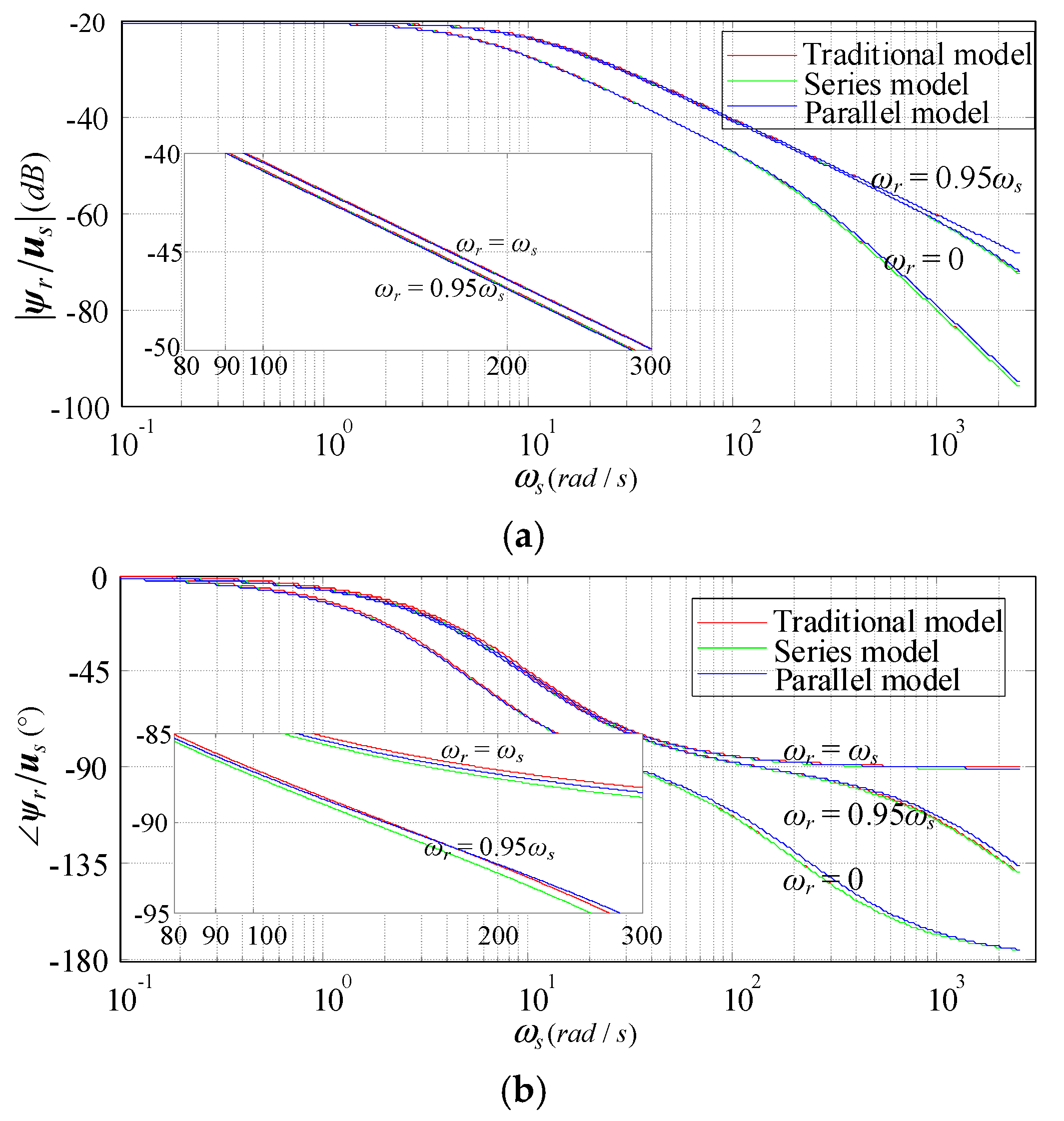
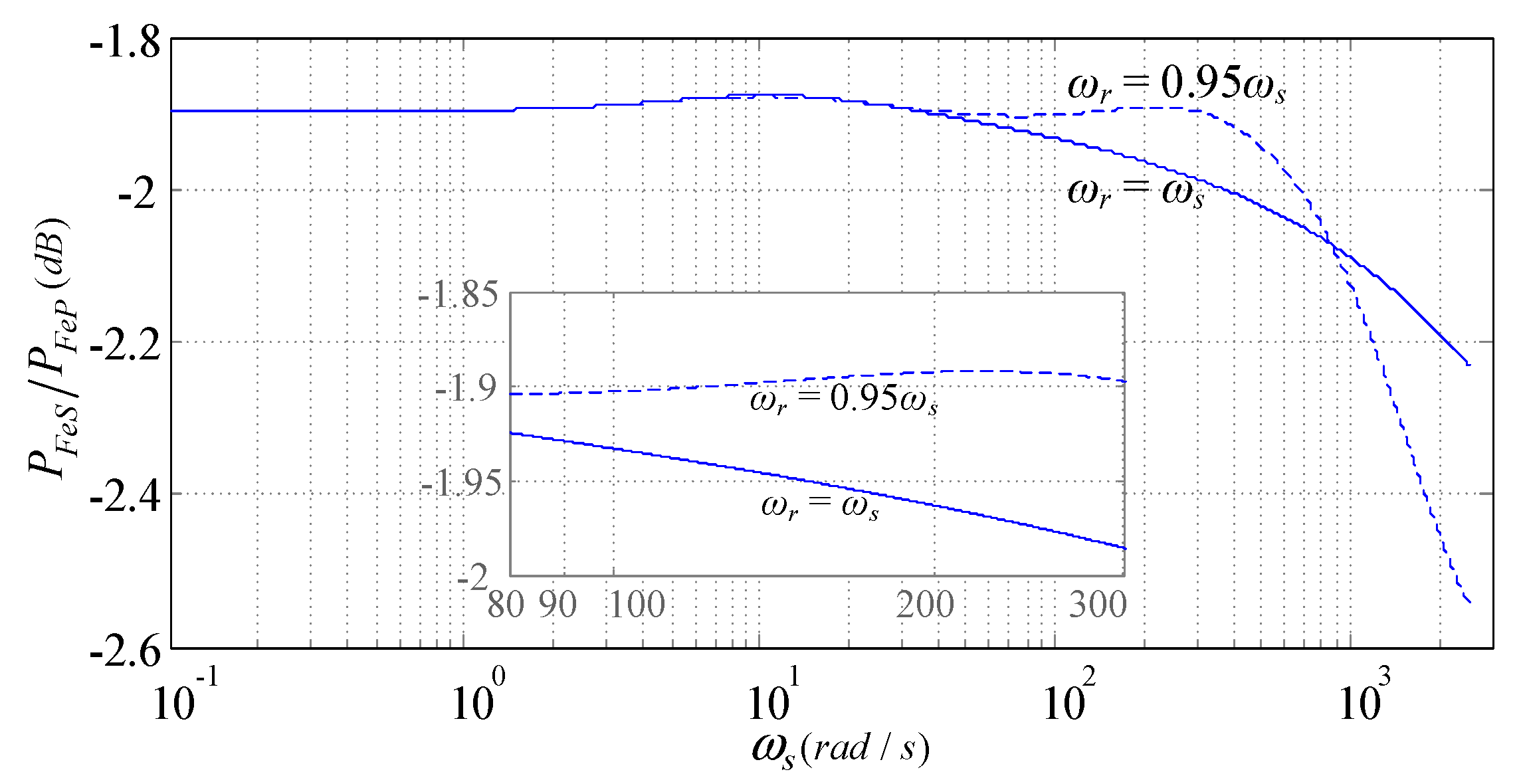
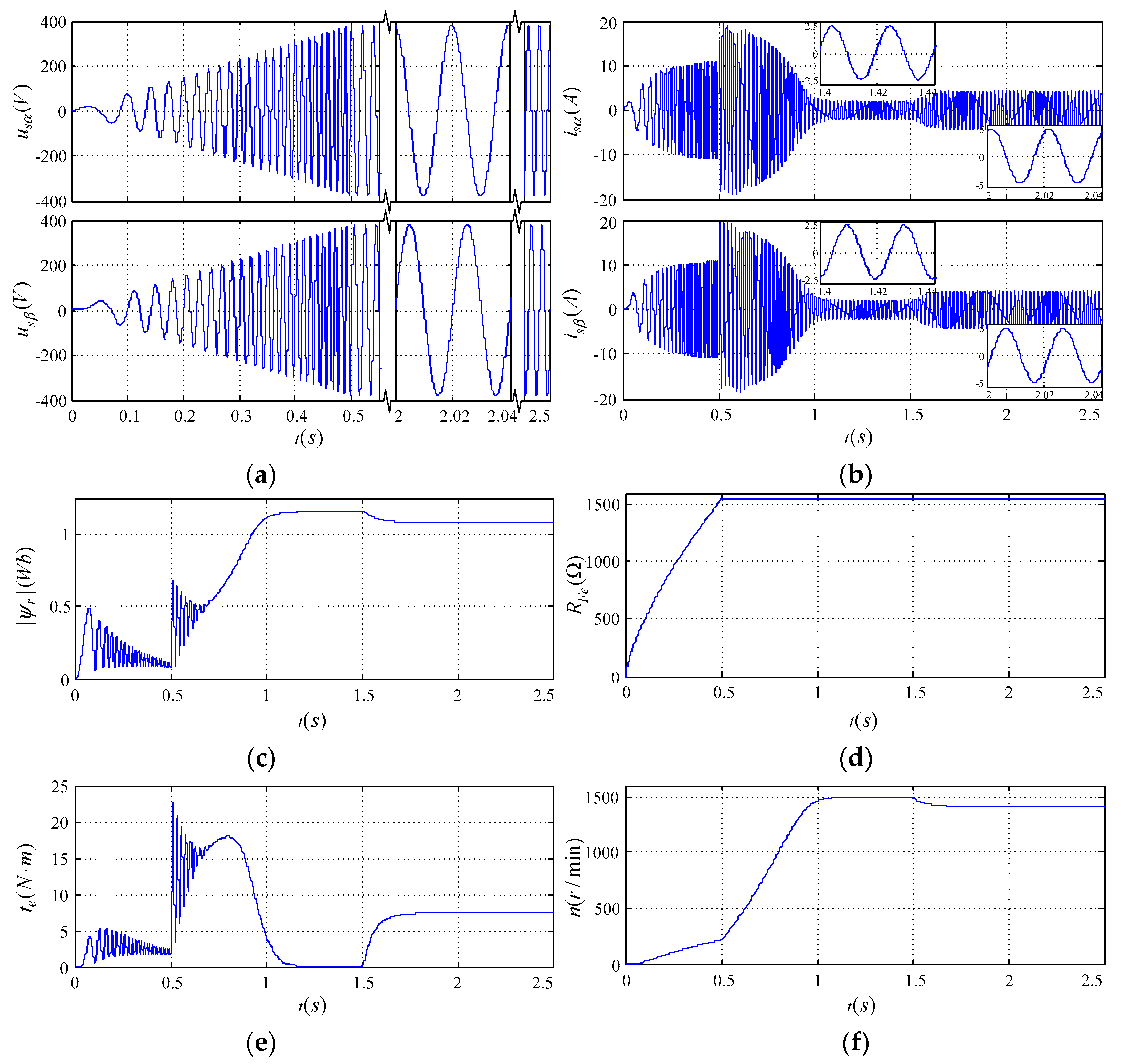
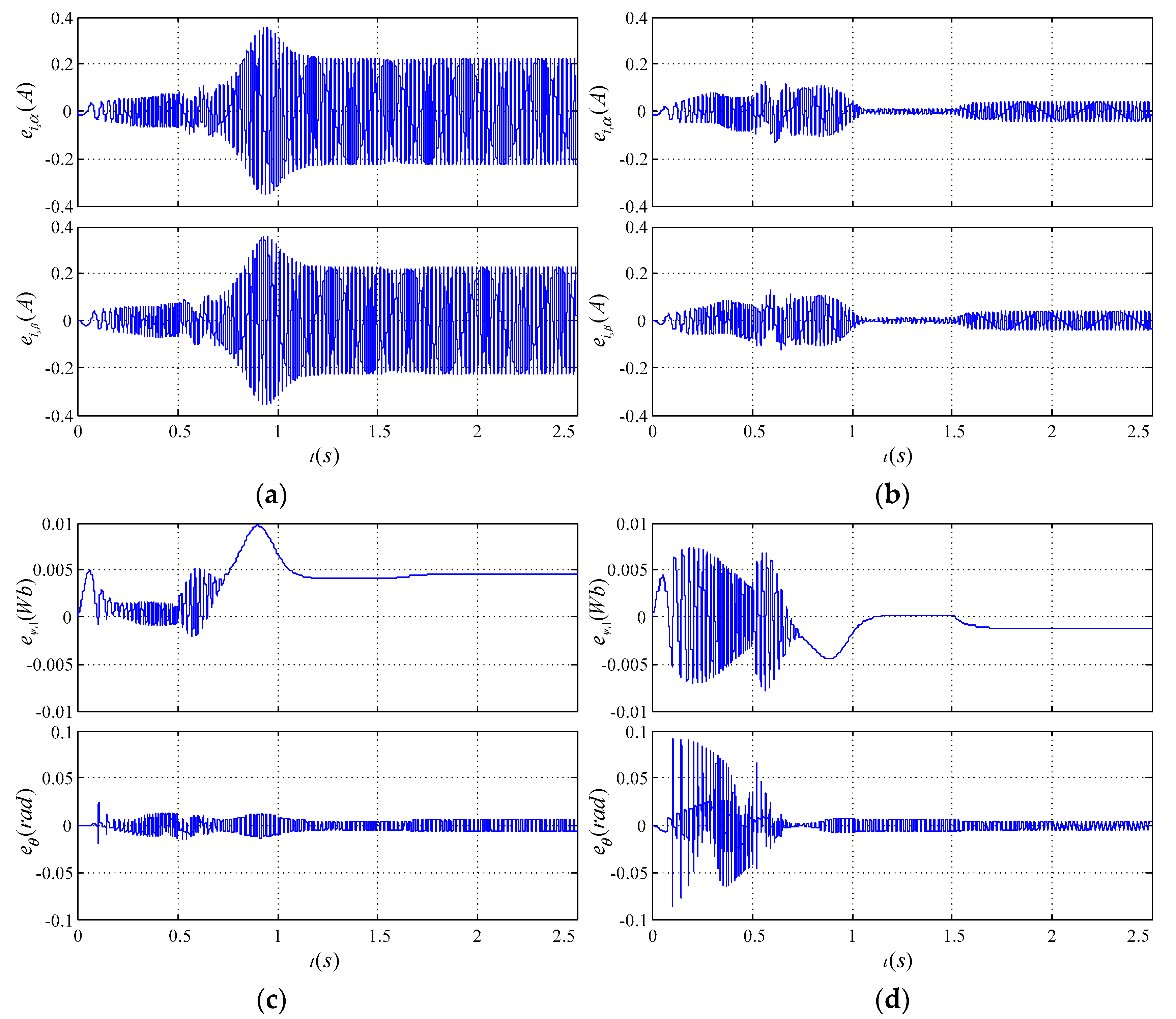
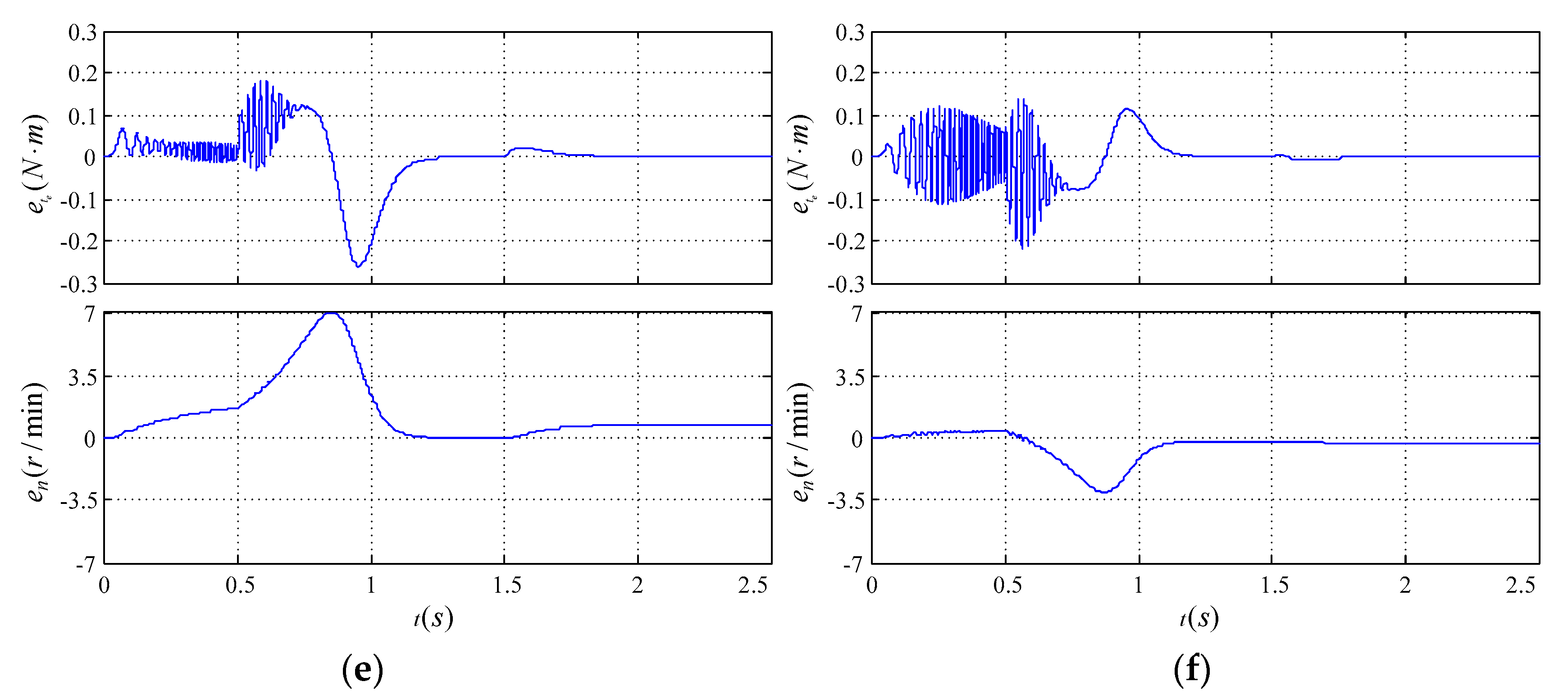
| Matrix | Levi Parallel Model | Hasegawa Series Model | Traditional Model |
|---|---|---|---|
| State matrix A | |||
| Input matrix B |
| Parameter | Rated Value | Parameter | Rated Value |
|---|---|---|---|
| Rs | 5.9 Ω | Rr | 5.6 Ω |
| RFe0 | 1546 Ω | Rm0 ≈ ωs02Lm2/RFe0 | 19.31 Ω |
| RM0 = Rm0/ωs0 | 0.061 Ω·rad/s | Lm | 0.55 H |
| Ls | 0.574 H | Lr | 0.58 H |
| n0 | 1500 r/min (1400 r/min) | tL0 | 7.5 N·m |
| P0 | 1.1 kW | p0 | 2.0 kW |
| Test Purposes | Methods and Conditions |
|---|---|
| Impedance characteristics | Plot and compare the Bode plots of the driving point admittances for the three models under ideal no-load, heavy-load, and locked-rotor conditions. |
| Excitation characteristics | Plot and compare the Bode plots of the stator voltage excitation function for the three models under ideal no-load, heavy-load, and locked-rotor conditions. |
| ILS characteristics | Plot and observe the characteristic curve of the ILS ratios of the series model and parallel model in the logarithmic coordinate system with the motor operating frequency changing under ideal no-load and heavy-load conditions. |
| Dynamic characteristics | Plot and compare the dynamic response of the three models under speed regulation conditions with speed open-loop and constant V/F. From 0 to 0.5 s is the ramp response test, and the frequency rise from 0 to nominal value. After the speed stabilized, the rated load is applied at 1.5 s |
© 2019 by the authors. Licensee MDPI, Basel, Switzerland. This article is an open access article distributed under the terms and conditions of the Creative Commons Attribution (CC BY) license (http://creativecommons.org/licenses/by/4.0/).
Share and Cite
Wang, K.; Huai, R.; Yu, Z.; Zhang, X.; Li, F.; Zhang, L. Comparison Study of Induction Motor Models Considering Iron Loss for Electric Drives. Energies 2019, 12, 503. https://doi.org/10.3390/en12030503
Wang K, Huai R, Yu Z, Zhang X, Li F, Zhang L. Comparison Study of Induction Motor Models Considering Iron Loss for Electric Drives. Energies. 2019; 12(3):503. https://doi.org/10.3390/en12030503
Chicago/Turabian StyleWang, Kang, Ruituo Huai, Zhihao Yu, Xiaoyang Zhang, Fengjuan Li, and Luwei Zhang. 2019. "Comparison Study of Induction Motor Models Considering Iron Loss for Electric Drives" Energies 12, no. 3: 503. https://doi.org/10.3390/en12030503
APA StyleWang, K., Huai, R., Yu, Z., Zhang, X., Li, F., & Zhang, L. (2019). Comparison Study of Induction Motor Models Considering Iron Loss for Electric Drives. Energies, 12(3), 503. https://doi.org/10.3390/en12030503





